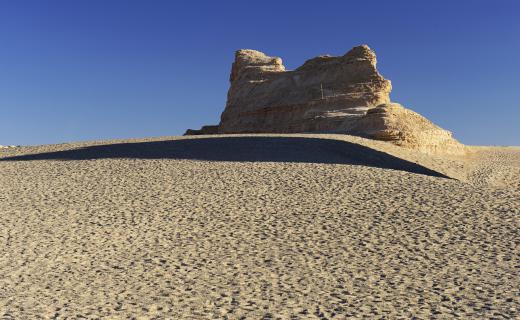Erosion control is a process commonly employed in construction, landscaping, and other fields aimed at keeping soil, rock, plant matter, and other environmental features from being removed by wind or rain. Controlling erosion can be very important, as the removal of certain landscape features can severely harm the aesthetic or functional value of a given piece of land. In some cases, as when structures are built on or near slopes, erosion can even pose risks to the integrity of the structures themselves. Civil engineers, landscapers, and others use a wide variety of techniques, ranging from planting plants with widespread fibrous roots to developing elaborate drainage systems, for the purpose of erosion control.
Some methods of erosion control are aimed simply at diverting the forces that cause erosion away from the surface of interest. Rain, for instance, tends to run down slopes and through gaps in landscaping, taking soil and other solids with it. One possible method of erosion control is simply to install a drainage system that bypasses the eroding surface entirely. Such a method may not completely halt or prevent the problem, but it can keep the majority of water flow away from the surface in question. In many cases, developing such a drainage system means only digging a path for the water, which can be done at little or no cost.

Effective drainage systems are not always the best methods for erosion control. They may, for instance, detract from the aesthetic value of an area, or the erosion itself may be caused by something other than water. In such cases, it is usually necessary to reinforce the eroding surface in some way. Some plants, for instance, can be helpful because their roots provide a "net" of sorts to support the soil and prevent it from being swept or blown away. Putting a layer of wood chips or similar materials on top of the eroding surface can also provide limited erosion control.

More drastic methods of erosion control are sometimes necessary, particularly on steep, sandy slopes with little natural support. Some people, for instance, choose to place fibrous mats on top of or beneath a layer of soil in order to prevent erosion. Other options include retaining walls, which, when well-placed, can provide strong areas of support for soil or sand and prevent large-scale erosion. Often, however, there is no best option and employing a combination of different erosion control methods is necessary.
